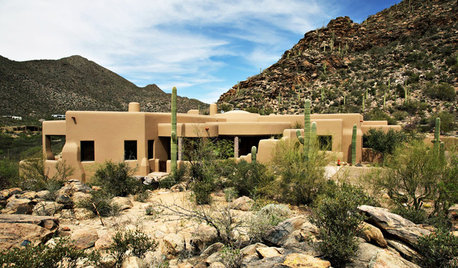Help reviving poorly maintained emerald zoysia
MarkHI
10 years ago
Related Stories

TRADITIONAL ARCHITECTURERoots of Style: Pueblo Revival Architecture Welcomes Modern Life
Centuries-old details of adobe construction still appeal in the desert Southwest, adapted to today's tastes
Full Story
FUN HOUZZDecorated Houses Help Save a Detroit Neighborhood
Art's a start for an inner-city community working to stave off urban blight and kindle a renaissance
Full Story
HOUZZ TOURSMy Houzz: Bright and Cheerful Updates to an 1890s Colonial Revival
Modern tweaks, including a kitchen overhaul, brighten a family’s home
Full Story
HOUSEPLANTSMeet a Houseplant With Excellent Communication Skills
It droops when thirsty, revives quickly and thrives under fluorescents. You may want to hire this hard worker for both home and office
Full Story
EARTH DAYThe Case for Losing the Traditional Lawn
Work less, help the environment and foster connections by just saying no to typical turf
Full Story
MOST POPULARHow to Reface Your Old Kitchen Cabinets
Find out what’s involved in updating your cabinets by refinishing or replacing doors and drawers
Full Story
CAPE COD DESIGNAmerican Architecture: The Elements of Cape Cod Style
This simple architecture style was born in New England but has stood the test of time around the United States
Full Story
SMALL HOMESHouzz TV: In Love With Echo Park Style
Whimsical artwork, vintage steals and online finds come together in this eclectic L.A. apartment
Full Story
GRASSESHow to Rock a Lawn
Weekend Project: The key to healthy grass begins with the soil. If turf works for you, here’s how to fix it and keep it looking its best
Full Story







dchall_san_antonio
MarkHIOriginal Author
Related Professionals
Forest Park Landscape Architects & Landscape Designers · Wixom Landscape Architects & Landscape Designers · Edmond Landscape Contractors · Goodyear Landscape Contractors · College Park Landscape Contractors · Hurricane Landscape Contractors · Medford Landscape Contractors · Midland Landscape Contractors · New Baltimore Landscape Contractors · Oviedo Landscape Contractors · Panama City Beach Landscape Contractors · San Pedro Landscape Contractors · Oxon Hill Landscape Contractors · San Pablo Landscape Contractors · Stafford Swimming Pool BuildersMarkHIOriginal Author
MarkHIOriginal Author
dchall_san_antonio